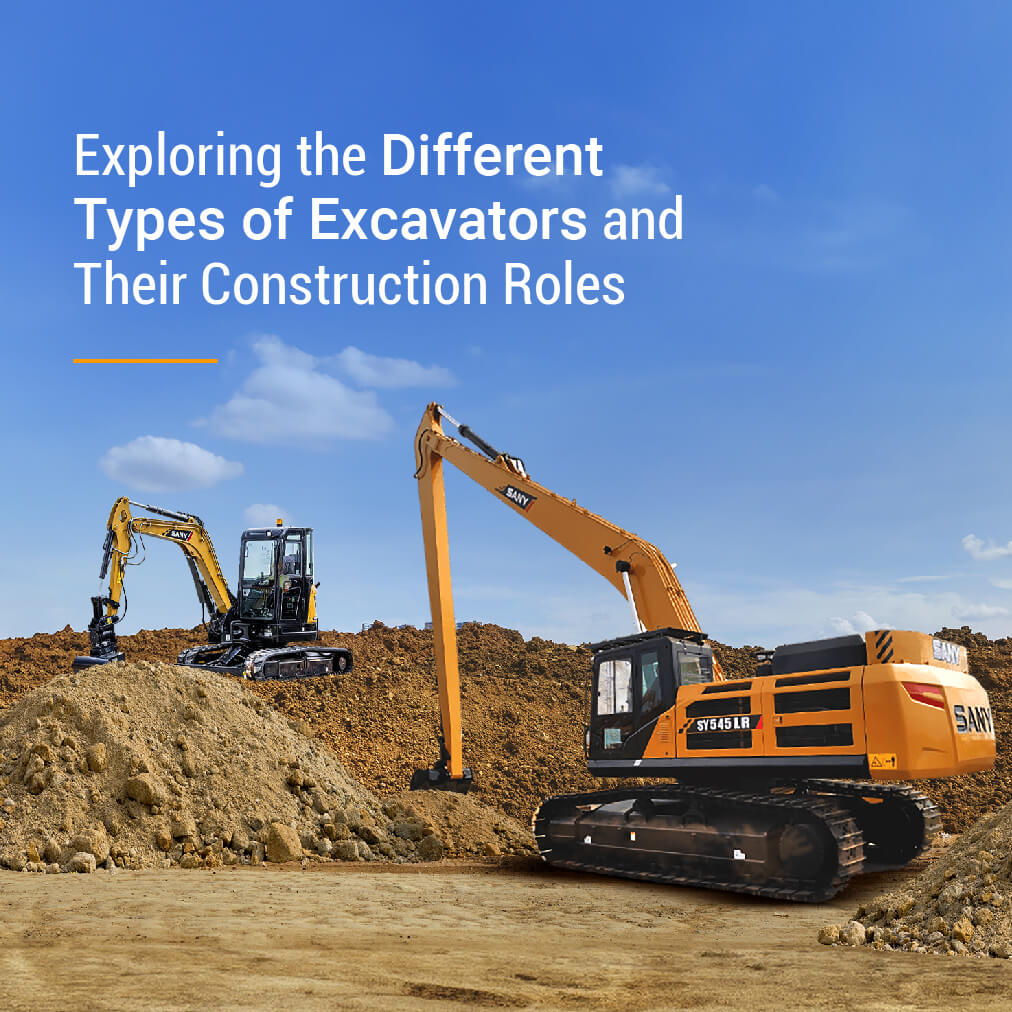Discovering the Various Types of Excavators and Their Contributions to Construction

Starting a construction project without an excavator is like setting sail without a compass – it's possible, but certainly not recommended. These powerful machines excel in tasks ranging from digging foundations and trenches to loading and lifting heavy materials. However, their effectiveness is not one-size-fits-all, leading to the necessity of different types of excavators tailored to specific jobs and environments.
From compact mini excavators ideal for confined spaces to massive hydraulic excavators suited for large-scale projects, each excavator type offers unique capabilities crucial for diverse construction needs. Furthermore, the wide range of excavator attachments further enhances their adaptability, enabling them to undertake numerous tasks with precision and speed. In this blog, we will explore various types of excavators and the different attachments used for excavator application.
Types of Excavator Machines
Here are various types of excavators used in construction sites:
Wheeled Excavators
Wheel excavators are known for their mobility and speed, making them perfect for road construction and urban development. They feature rotating platforms, arms, and buckets that allow efficient digging, lifting, and material movement across varied terrains. Their ability to travel on paved surfaces makes them highly versatile for a range of construction applications.
- Application: Ideal for road construction, urban development, and applications requiring quick mobility.
Long-Reach Excavators
Long-reach excavators are designed with extended arms and booms, allowing them to reach deep into trenches or over tall structures. These machines are especially useful for dredging, demolition, and bridge construction. Their stability at long distances ensures safe and precise operations in challenging environments.
- Application: Useful in tasks requiring deep excavation, dredging, or demolition work.
Mini Excavators
Mini excavators are small yet powerful machines designed to operate in tight spaces without causing damage to the surrounding area. With features like zero tail-swing or reduced tail-swing, they can easily navigate through narrow areas such as parking lots, residential zones, and indoor locations.
- Application: Frequently used in parking lots, indoor spaces, and other cramped sites where standard excavators may not fit.
Small Excavators
Small excavators are compact and efficient, making them perfect for smaller to medium-sized projects. They offer great versatility and are commonly used in utility work, landscaping, and residential developments due to their ease of use and maneuverability.
- Application: Ideal for utility work, residential projects, and landscaping tasks.
Medium Excavators
Medium excavators strike a balance between power and size, making them suitable for a variety of construction tasks. They are often used for building construction, infrastructure projects, and general excavation work, offering both durability and flexibility.
- Application: Suitable for building construction, infrastructure projects, and general excavation work.
Large Excavators
Large excavators are built for heavy-duty tasks, providing immense power and reach. These machines are essential for mining operations, large-scale earthmoving, and major construction projects that require high performance and reliability.
- Application: Ideal for mining, large-scale earthmoving, and major construction projects.
Hydraulic Excavators
Hydraulic excavators are powered by hydraulics, offering superior control and precision. They are widely used in construction, mining, and land development due to their efficiency and ability to handle tough conditions with ease.
- Application: Commonly used in construction, mining, and land development projects.
Different Types of Excavator Attachments
Excavator attachments are used to enhance the functionality and versatility of excavators, allowing them to perform a wide range of tasks beyond standard digging and material handling. Here are some major types of excavator attachments used for different construction work:
Rock Breaker
A rock breaker is a powerful attachment that delivers high-impact energy to break hard materials like stone and concrete. It is particularly useful in demolition and site preparation work, where breaking up tough surfaces is necessary.
Coupler
Couplers allow for quick tool changes without the need for extra labor. This makes them extremely valuable on job sites where multiple tasks are performed throughout the day, helping to improve efficiency and reduce downtime.
Pile Driver
Pile drivers are used to drive piles into the ground to provide stable foundations for buildings and structures. They are essential for projects that require deep and strong foundation support, especially in soft or unstable soil conditions.
Grapple
Grapples are attachments that help in gripping and moving large objects such as logs, debris, or scrap materials. They are often used in forestry, demolition, and waste management operations.
To Conclude
Understanding the various types of excavators and their specialized roles is essential for optimizing construction operations. By leveraging the right excavator and attachments, construction professionals can enhance efficiency, productivity, and precision across diverse job sites.
As a renowned supplier of construction machinery, we offer an extensive range of world-class excavators designed to meet the diverse needs of the construction industry. Our excavators, distinguished by their robust build and advanced technology, range from compact mini models to powerful large-scale machines. With a commitment to quality, efficiency, and customer satisfaction, Sany India ensures that every machine delivers exceptional performance and reliability. Choose Sany India excavators for unparalleled productivity and superior construction outcomes.
Towable Backhoes,Mini Backhoe,Backhoe Excavator,Tractor Backhoe,Compact Excavator Mower
Changzhou Kafurter Machinery Co., Ltd , https://www.kafurter.com
